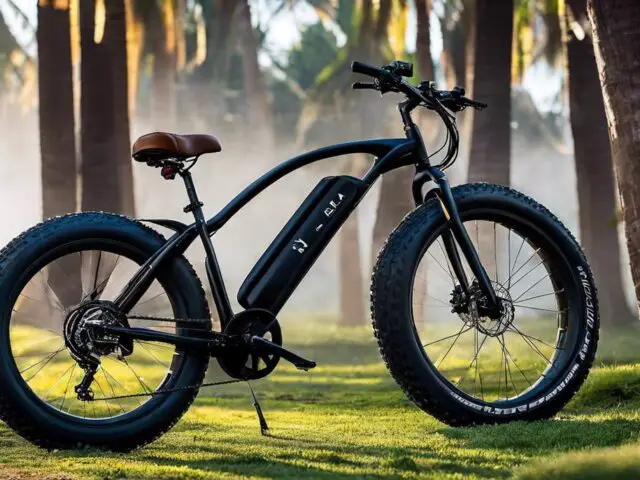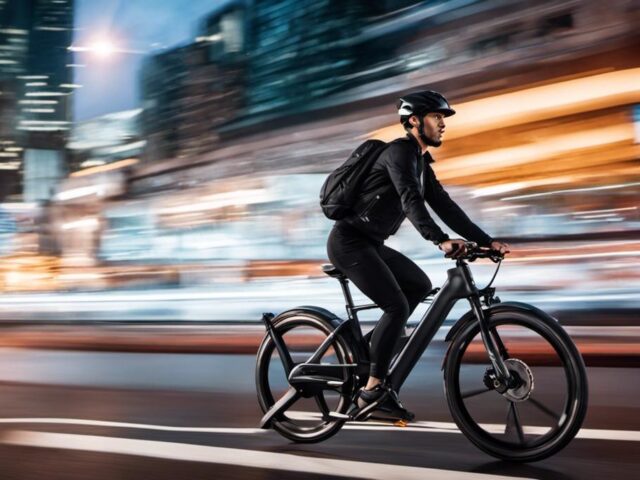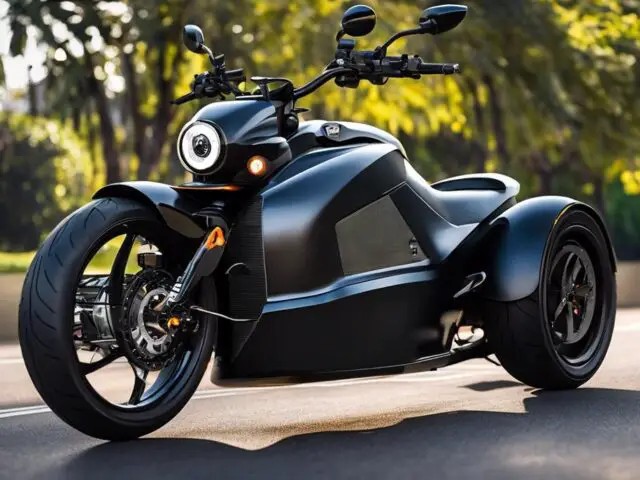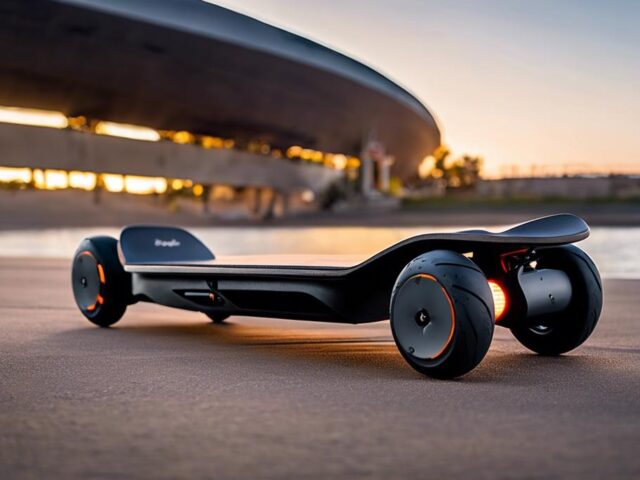With the rise of eco-friendly modes of transportation, electric bikes have carved their niche as an enjoyable, economical, and efficient choice for many commuters. Whether it’s the quest for a healthier lifestyle, the appeal of dodging all the heavy traffic congestion, or the sheer joy of a breezy ride, an increasing number of people are turning towards electric bikes. However, the key to an easy e-bike commute does not lie in owning an electric bike alone, but understanding your needs, knowing how to maintain your bike, and planning the right routes play pivotal roles. Let’s look at the essential tips for making the smoothest ride possible.
Choosing the Right Bike for Your Needs
Electric bikes can revolutionize your commute, kicking it up a notch from tedious to thrilling. With so many options available in the market, picking the right e-bike might seem like a monumental task but don’t fret. Listed here are the crucial factors that can aid in selecting the perfect e-bike for your commuting needs:
Consider Your Commute:
Your commute’s specifics, such as distance, terrain, and potential weather conditions, will play a massive role in your perfect e-bike choice. If your journey is mostly flat terrain and mild weather, a simpler e-bike model might suffice. However, for longer distances across hilly regions and varying weather, it’s wise to invest in more advanced models with better battery capacity and increased durability.
Compute Your Budget:
When it comes to e-bikes, the price spectrum can be extensive. From budget-friendly models to high-end, feature-packed bikes, the range is virtually endless. Naturally, a higher budget can fetch you better features like a longer battery life, higher speeds, and more comfort. But a savvy buyer can find a well-balanced e-bike without breaking the bank.
Frame Size Matters:
One size doesn’t fit all when it comes to e-bikes, or any bike for that matter. An e-bike too big or too small can make your ride uncomfortable and potentially unsafe. Therefore, ensure that the e-bike you’re considering fits you well. Customer reviews, brand size guides, and if possible, test rides, can assist in evaluating the fit.
Consider the Bike Weight:
Remember, the heavier the bike, the more effort it takes to pedal and the faster it will consume battery life. Lighter e-bikes are easier to handle, but they might not be as robust as their heavier counterparts. Assess the bike material and the trade-off between weight and durability to suit your commuting needs.
Investigate Battery Life:
A good rule of thumb is to opt for an e-bike battery with a higher range than your necessity. This will take into account any emergencies or situations where you have to travel more than your standard commute. Brand reputation also matters, as a reliable brand means superior battery performance and a longer lifespan.
Don’t Forget About Gears:
Depending on your commute’s terrain, gears can play a vital role in your overall riding experience. For hilly areas, multi-gear e-bikes can ease your ride and save battery life. However, for relatively flat commutes, a single-speed e-bike should serve just fine.
Assess After-Sales Service:
Last but not least, the e-bike’s brand matters, not just in terms of product quality but also with regard to after-sales service and availability of spare parts. Research customer reviews on the brand’s service and ensure you’re making a choice that’s not just good for now but also for the future.
| Brand | Model | Frame Size | Weight (lbs) | Battery | Price (USD) | Bike Type |
|---|---|---|---|---|---|---|
| Specialized | Turbo Levo | 15.5″, 17″, 18″, 19″, 21″ | 44.8 | 700Wh | $5,499 | Mountain |
| Trek | Powerfly 5 | 15.5″, 17″, 17.5″, 19.5″, 21.5″ | 51.2 | 625Wh | $3,499 | Mountain |
| Giant | Trance E+ 3 | 15.5″, 17″, 18.5″, 20.5″ | 46.3 | 504Wh | $4,099 | Mountain |
| Rad Power Bikes | RadRover 6 Plus | 17″, 19″, 21″ | 69.4 | 672Wh | $1,999 | Hybrid |
| Aventon | Level | 16″, 18″, 20″ | 48.5 | 504Wh | $1,699 | Commuter |
| Lectric | XP 2.0 | 17″ | 49.5 | 504Wh | $999 | Commuter |
| Canyon | Commuter 7 | S, M, L, XL | 42.9 | 504Wh | $1,799 | Commuter |
| Ariel Rider | Kepler | 17″, 19″, 21″ | 49.6 | 504Wh | $1,499 | Fat Tire |
| Juiced Bikes | HyperScrambler 2 | 17″, 19″, 21″ | 65 | 1008Wh | $3,699 | Fat Tire |
| Sur Ron | X-Bike | One Size | 52.9 | 60V 20Ah | $3,999 | Dirt Bike |
| HOTEBIKE | A6AH26 | 17″, 19″, 21″ | 55.1 | 48V 17.5Ah | $1,399 | Cargo |
Please note: This is just a small sample of the many e-bike brands and models available. There are many other great options out there, so be sure to do your research before you buy.
Choosing the perfect electric bike for your commute isn’t just about features or budget. It’s about finding a machine that resonates with your lifestyle and brings joy to the journey. Enjoy the ride!

Understanding Necessary Bike Maintenance
One of the most impressive transformations within the biking realm has been the emergence of electric bikes. This has revolutionized the cycling scene and it has also brought along a handful of new maintenance processes that are significantly distinct from traditional bikes.
Start with the Battery Care: Unlike conventional bicycles, e-bikes have a battery, essentially their life source. It is essential to understand how to maintain optimal battery health, like charging routines and ideal storage conditions. A fully drained battery should be avoided, and storing in extreme temperatures can also affect battery life and performance.
The Throttle and Control Systems: These components are absent in traditional bikes. Always ensure the throttle snaps back when released and the control system (fixed on the bike’s handlebar) is functioning properly. Malfunctions with the control system can cause problems with many of the bike functions.
Tire Maintenance: Similar to traditional bikes, too low or too high tire pressure and regular punctures are a risk for e-bikes. With the added weight from the battery and motor, tires on e-bikes tend to wear out faster. Frequent checks for optimal air pressure and the use of more robust, puncture-resistant tires can extend their lifespan.
Braking System and Regular Inspection: The e-bike’s speed calls for a more efficient braking system. Traditional bikes usually have V-brakes or similar variants, while e-bikes often come with the more potent disc brakes. Regular inspection and brake pad replacements become fundamentally crucial with the fast-paced nature of e-bikes.
Motor Maintenance: The motor is the powerhouse of your e-bike, providing you an extra push up that steep hill or on a long ride. To ensure smooth operation, periodic cleaning and inspection of the motor are necessary. But remember, professional help may be required here as motors are complex and handling them incorrectly could lead to damage.
Check the Electrical Connections: Always stay vigilant about the integrity of all electrical connections. This includes the battery terminals, motor connections, and any other electronics. Loose or corroded connections can lead to efficiency loss or even total system breakdown.
Cleaning Practices: While traditional bikes can handle a splash of water during cleaning, e-bikes are more sensitive due to their electrical components. It’s important to avoid direct water jets on the motor, battery, and display unit. Instead, a simple wipe down with a damp cloth gets the job done.

Planning Your Route for a Smooth Ride
Mapping Your Route
Planning the most efficient route is crucial for e-bike commuting. Start by mapping out potential paths to your destination, bearing in mind factors such as traffic, road quality, and the existence of cycle lanes. Google Maps is a fantastic resource for this task, as it offers a bike route option that considers bike paths and bike-friendly roads. Experiment with different paths during non-peak hours to find the optimal route, keeping a keen eye out for potentially hazardous spots and adjusting your path accordingly.
Understanding Road Conditions and Weather
Take into account the changing road conditions due to the time of year and local weather. Seasons can significantly affect the e-bike’s efficiency and safety. Ice, snow, or even heavy rainfall can present dangerous conditions, while dry and calm conditions are perfect for e-biking. Always keep an eye on the weather forecast and prepare your gear depending on what’s predicted.
Regular Software Updates
Don’t underestimate the importance of ensuring that the software in your e-bike is always up to date. Manufacturers often push out updates that can improve battery efficiency, motor performance, or even add new safety features. Some e-bikes also include advanced features such as GPS tracking, remote lock/unlock, and theft alerts. Make sure these features are enabled and working correctly to enhance your commute.
Accessories for Safety
Visibility is always one of the top safety tips for riding e-bikes. In addition to your e-bike’s built-in lights, invest in a bright and durable helmet-mounted light. The pulsing, high-intensity beam makes you more visible to motorists than any bike-mounted light. Reflective clothing or accessories can also drastically improve your visibility.
Battery Tips
Charge Your Battery: Running out of power during your commute can be frustrating. To avoid this, charge your e-bike’s battery regularly. Charging overnight or at your workplace (if facilities are available) will ensure you have enough power for your trip.
If your commute involves a longer distance, it might be useful to invest in an additional battery pack. A spare, fully-charged battery not only gives you peace of mind but also reduces the risk of being stranded due to battery drainage.
Commuting with an e-bike can be a game-changer. It can bring excitement, improve your health, and cut your transportation costs. But like any other mode of transportation, it requires planning and maintenance for optimal safety and efficiency. With these tips, you can confidently ride your e-bike and enjoy the benefits of this refreshing alternative to traditional commuting.
Additional Tips
Here are some additional tips:
Know the Rules: Familiarize yourself with local e-bike regulations and laws. Some areas have specific rules, such as speed limits and helmet requirements. Understanding the legal framework for e-bike usage in your area ensures you’re compliant and safe.
Adjust Power Assist Levels: Most e-bikes offer multiple power assist levels. Learn how to adjust these settings to tailor your ride to your needs. Lower assist levels can extend battery life, while higher levels provide more speed and assistance.
Carry Spare Parts: Pack a small toolkit with essential tools and spare parts. A multi-tool, spare tube, and tire levers can be lifesavers if you encounter minor repairs or flat tires during your commute.
Secure Your E-Bike: E-bikes are valuable and can be tempting targets for thieves. Use a quality lock to secure your e-bike when parking it at your workplace or other public areas.
Ride Defensively: Be a defensive rider. Stay aware of your surroundings, anticipate the actions of other road users, and be prepared to react to unexpected situations. Your vigilance can prevent accidents.
Follow Traffic Rules: Obey all traffic rules. This includes stopping at traffic signals and yielding to pedestrians. By respecting other road users, you contribute to a safer commuting environment.
Signal Your Intentions: Use hand signals to indicate turns and lane changes. Clear communication makes your intentions obvious to drivers and fellow cyclists.
Avoid Distractions: While on your e-bike, focus solely on the road and your surroundings. Avoid using your smartphone or other distractions that can compromise safety.
Maintain a Comfortable Pace: Adjust your e-bike’s speed to match the conditions and respect the flow of traffic. Riding too fast in crowded areas can be unsafe and inconsiderate. Always yield to pedestrians and slower cyclists.
Respect the Environment: E-bike commuting is an eco-friendly way to get around. Be mindful of your carbon footprint and dispose of e-bike batteries and related waste properly.
Take breaks. If you’re riding a long distance, be sure to take breaks to rest and rehydrate.
Enjoy the Ride: Lastly, remember that e-bike commuting can be an enjoyable experience. Take time to appreciate the journey, the health benefits of cycling, and the environmentally-friendly mode of transportation you’ve chosen.

With these essential tips in mind, you’re well-prepared for a smooth and enjoyable e-bike commuting experience. Safe and sustainable, e-bike commuting is not only a practical choice but also a pleasant way to navigate your daily routine.
Helpful Links
For all your RC Questions, Click HERE
If you are interested in RC cars and trucks, RC World has you covered.
For RC boats and watercraft, check these articles out.
For all your RC Airborne endeavors, we have everything you need.
Adjusting Electric Skateboard Speed Settings
Electric skateboards are transforming the way we move, offering a blend of excitement and practicality that’s hard to match. With a remote control in hand, riders have the…
What Is FPV Racing? A Deep Dive Into The Future of Racing Sports
Embracing new innovations in technology and competition, FPV (First Person View) racing is a growing sport phenomenon making waves in today’s digital world. This fusion of high speed,…
Fat Tire Electric Bike: A Hobbyist’s Guide
The constant pursuit of unprecedented thrills and an unflinching love for both technology and adventure have birthed an avant-garde contrivance with remarkable potential – the fat tire electric…
Elevate Your E-Bike Experience With An Integrated Display
Are you tired of the same old commute to work every day? Are you looking for a way to make your daily rides more enjoyable and efficient? Look…
DIY Guide: Build Your Own Electric Trike
Embarking on the journey of building your very own electric trike can be an exciting, yet challenging endeavor. This project requires a solid understanding of the different components…
Top Electric Skateboards for Tricks and Stunts: A Hobbyist’s Guide
The world of electric skateboarding is rapidly advancing, with cutting-edge boards hitting the streets and skateparks alike. These aren’t just your average skateboards; they’re marvels of modern technology…
Revolutionizing E-Bikes: Harnessing Lithium-ion Battery Tech
Cycling has long been a popular form of transportation and recreation, but with the advancements in technology, it has undergone a major transformation. Electric bikes, or e-bikes, have…
Exploring the Magic of Drone Light Shows
In the bewitching cloak of darkness, the skylines of our cities are increasingly being illuminated by the mesmerizing spectacle that is drone light shows. Through the novel fusion…
Safe and User-Friendly Electric Skateboards
The allure of gliding effortlessly through cityscapes and coasting down boulevards is no longer a fantasy reserved for sci-fi. Electric skateboards have brought this exhilarating vision to life,…










